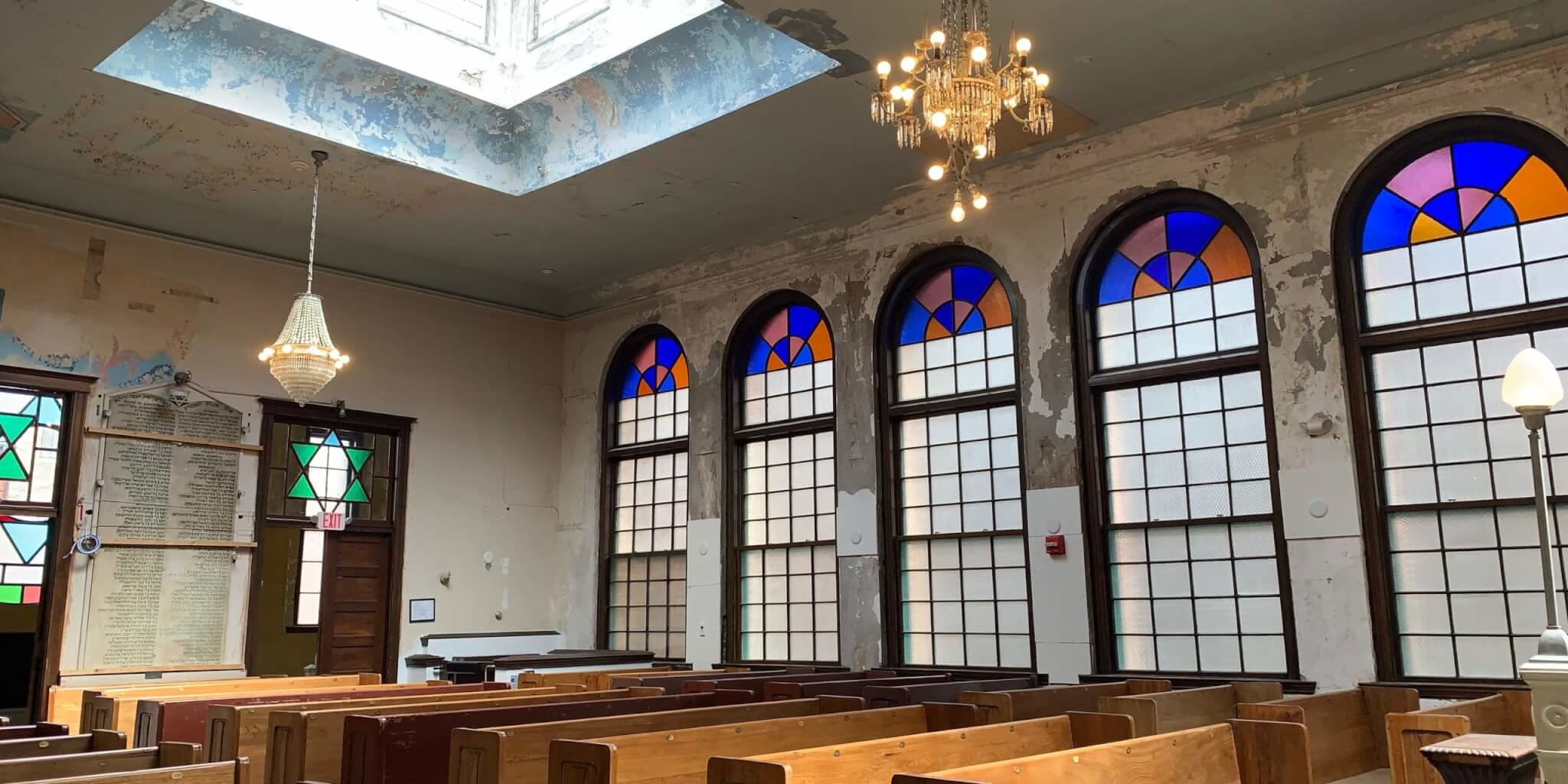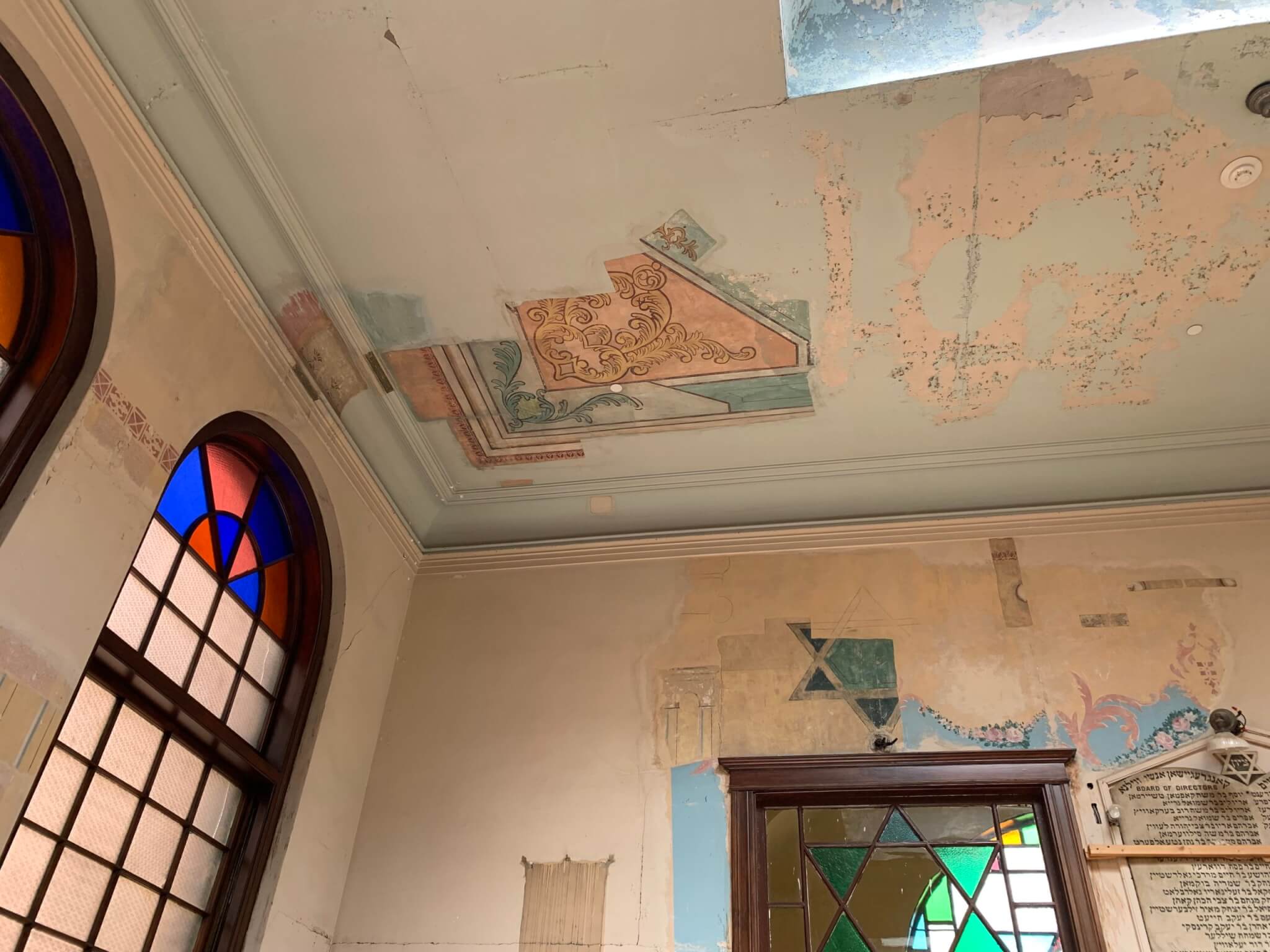New Life, New Vision for The West End’s Historic Vilna Shul
Stepping into the old Vilna Shul on Beacon Hill is like stepping back in time. You’re transported to the turn of the 20th century when new immigrants, especially Jews from Eastern Europe, flooded Boston’s West End looking for a new life.
In the early 1900s, 57 synagogues filled Boston. The Vilna is the last remaining synagogue building from that era.
“It’s a special place,” said Christen Hazel, The Vilna’s Director of Development.
“The building was bustling in its day,” she added. “This is where people came to be together. The synagogue was the center of their community. There were kids running around, women cooking, and men praying. Neighbors came together here to make blankets for new immigrants coming off the boat.”
Today, supporters are breathing new life – and a new vision – into this historic building at 18 Phillips Street. The Vilna is no longer an active synagogue, but a center for Jewish culture and community engagement. It hosts concerts, speakers, films and tours. People can rent it for private events and life-cycle celebrations.
“This is an extraordinarily exciting and important inflection point for The Vilna,” said Executive Director Dalit Ballen Horn. “We are living through a moment in American religious life when many people are seeking non-religious ways to make their religion and religious community a greater source of meaning, purpose and joy.
“At The Vilna, we are doubling down on opportunities that foster friendships and community via arts and entertainment, holiday celebrations through a cultural lens and Jewish learning through the arts. We are excited to use music, theater, literature, culinary arts and the like to introduce and explore Jewish culture and heritage for all who are interested.”
It Started with a landsmanshaft
When Jewish refugees arrived in Boston from around Vilnius, Lithuania in the late 1800s, they formed a landsmanshaft (a small group of immigrants from the same area in Europe) on the north slope of Beacon Hill, praying together in people’s homes. They called themselves Anshei Vilner, or People of Vilnius.
In 1906, they bought the former 12th Baptist Church on Phillips Street and turned it into their synagogue. (They kept the church’s pews but scratched out the image of a cross on each one). A decade later, the city bought and demolished that building to make way for the expansion of the Wendell Phillips School next door.
So, on December 11, 1919, Anshei Vilner laid the cornerstone for a new building at 18 Phillips Street. The congregation hired the only Jewish architect in the city, Max Karlmam, and young men in the community helped with the construction. The Vilna Shul was an active synagogue for decades to come. The sanctuary sat 300 people, separated into men’s and women’s sections.
When urban renewal demolished the neighborhood in the 1950s, many Jewish families moved to the suburbs. In 1985, Vilna Shul’s last remaining member, Mendel Miller, held a Rosh Hashanah (Jewish New Year) service in the synagogue for the last time. The building sat empty for nearly 10 years, falling into disrepair.
In 1994, volunteers rescued the building, cleaning it up as best they could, and reimagining it as a cultural center.
“We are bringing it back to life, literally and figuratively,” Hazel said.
The Vilna recently completed a $4 million renovation, restoring its community room, creating office space, and installing new electrical and HVAC systems. Next, it will renovate the 2nd-floor sanctuary, where Jewish folk murals have been discovered.
Historic murals
In 1998, three layers of Jewish folk murals were uncovered on walls throughout The Vilna. They had been painted over decades earlier, which, ironically, may have preserved them.
The three layers include painted scenes from the Old Testament, stenciled images, and art nouveau designs. In Lithuania, Poland, and Belarus, wall decorations were a common feature in synagogues.
Restorationists and preservationists are working to save the murals now. They are the only known multi-layered Jewish folk art murals remaining in America today.
Stained Glass Star of David
Standing outside The Vilna now, your eyes are drawn to the large, stained-glass Star of David (10 feet in diameter) over the original wooden front doors. Inside the sanctuary, the old church pews are still here, along with the synagogue’s original arc with a golden American Eagle perched on top. There are dust-covered plaques with congregants’ names dating to the early 1930s. Due to years of neglect and water damage, the ceiling and walls are cracked and waiting for the next round of renovations.
Honoring the immigrant experience
So, why is it so important to keep The Vilna going today, so many decades after its prime?
“First, we want to honor those who came before us,” Hazel answered. “And we need to teach future generations about the immigrant experience.”
The Vilna reintroduced small group tours in May, National Jewish Heritage Month.
“After two years of social distancing for the sake of the greater good, The Vilna is committed to providing safe and welcoming opportunities to gather and celebrate Jewish culture and to deepen one’s connection to their heritage,” said Ballen Horn.
“Over the next year, The Vilna is excited to curate events centered on talks and entertainment, holiday celebrations and adult enrichment courses that deepen our identity, spark insights into our tradition and foster new friendships.”
To learn more about The Vilna and its programming, visit www.vilnashul.org.






